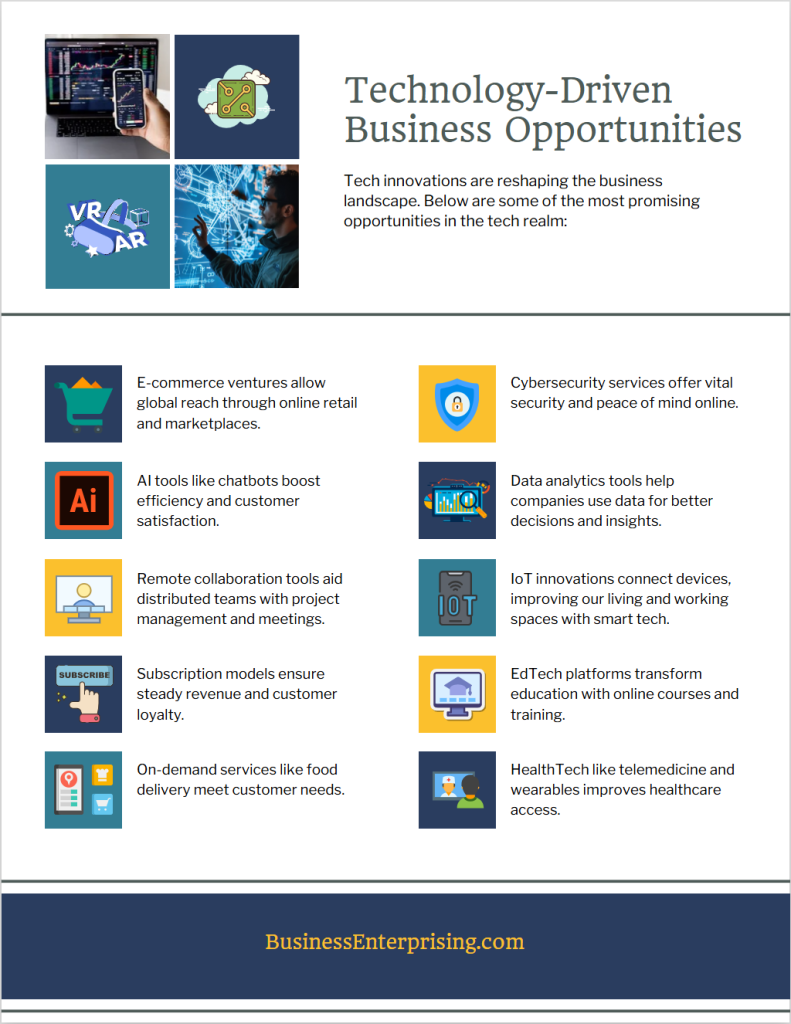
The Role of Technology in Modern Business
Digital transformation is reshaping industries by integrating technology into all aspects of business operations. This shift enhances efficiency, improves customer experiences, and drives innovation. By adopting digital tools, you can streamline processes and respond swiftly to market changes. Consequently, businesses that embrace digital transformation often gain a competitive edge.
Emerging technologies, such as artificial intelligence and blockchain, offer new avenues for growth. AI can automate routine tasks, allowing you to focus on strategic initiatives. Blockchain enhances transparency and security in transactions, building trust with customers. Additionally, the Internet of Things enables real-time monitoring of operations, leading to informed decision-making. By leveraging these innovations, you can uncover technology-driven business opportunities.
However, integrating new technologies requires careful planning. Assess your current processes to identify areas where technology can add value. Invest in employee training to maximize the benefits of new tools. Furthermore, stay informed about technological trends to remain competitive. By thoughtfully embracing digital transformation, your business can thrive in the evolving marketplace.
E-Commerce and Digital Marketplaces
E-commerce has revolutionized the retail landscape, offering technology-driven business opportunities for entrepreneurs. By establishing an online store, you can reach a global audience without the constraints of a physical location. This approach reduces overhead costs and provides flexibility in managing your inventory. Additionally, the dropshipping model allows you to sell products without holding stock. When a customer makes a purchase, the order is forwarded to a supplier who ships the product directly to the customer. This method minimizes upfront investment and simplifies logistics.
Leveraging digital platforms can significantly expand your customer reach. Utilizing social media channels enables you to engage with potential customers and build brand awareness. Moreover, search engine optimization (SEO) strategies can improve your website’s visibility, attracting more visitors. Email marketing campaigns also offer a direct line to your audience, promoting products and fostering customer loyalty. By integrating these digital tools, you can effectively market your offerings and drive sales.
However, success in e-commerce requires careful planning. Selecting reliable suppliers is crucial to maintain product quality and customer satisfaction. Additionally, providing excellent customer service can set you apart from competitors. Regularly updating your product listings and website design keeps your online presence fresh and engaging. By staying adaptable and responsive to market trends, you can capitalize on the vast potential of e-commerce and digital marketplaces.
Artificial Intelligence and Automation
Artificial intelligence (AI) and automation present significant technology-driven business opportunities. By implementing AI-driven solutions, you can enhance efficiency and productivity. For instance, AI can analyze large datasets swiftly, providing insights that inform strategic decisions. Additionally, AI-powered chatbots can handle customer inquiries, allowing your team to focus on complex tasks. These applications streamline operations and improve service quality.
Automation further optimizes business processes by reducing manual effort. Automated systems can manage inventory levels, process transactions, and monitor equipment performance. This reduces the likelihood of human error and ensures consistency. Moreover, automation can lead to significant cost savings by decreasing labor expenses and increasing operational speed. By embracing these technologies, you position your business for growth in a competitive market.
However, integrating AI and automation requires careful planning. Assess your current workflows to identify areas that would benefit most from these technologies. Invest in training for your staff to effectively use new tools. Additionally, stay informed about advancements in AI and automation to continually refine your strategies. By thoughtfully adopting these innovations, you can capitalize on technology-driven business opportunities and drive your business forward.
Remote Work and Virtual Collaboration
The rise of remote teams and digital workplaces has transformed how businesses operate. Advancements in technology have enabled employees to work from anywhere, leading to increased flexibility and access to a global talent pool. Consequently, many organizations have adopted hybrid work models, combining remote and in-office work to balance flexibility with collaboration.
To manage a virtual workforce effectively, it’s essential to implement the right tools and strategies. Utilizing project management platforms can help track tasks and deadlines, ensuring team alignment. Additionally, video conferencing tools facilitate face-to-face interactions, fostering better communication and team cohesion. Embracing asynchronous communication methods allows team members across different time zones to collaborate efficiently.
However, managing remote teams also presents challenges. Building trust and maintaining clear communication are vital for success. Establishing clear roles, expectations, and procedures can help mitigate misunderstandings. Regular check-ins and updates keep everyone informed and engaged. Investing in digital skills training ensures that all team members are equipped to navigate the digital workspace effectively.
By leveraging these technology-driven business opportunities, you can create a productive and cohesive virtual work environment. Implementing effective management practices and utilizing appropriate tools will help your remote team thrive.
Tech-Enabled Service Businesses
Tech-enabled service businesses are transforming industries by offering on-demand services and subscription-based models. These approaches provide convenience and flexibility, meeting the evolving needs of consumers. By leveraging technology, you can create personalized experiences that foster customer loyalty. For instance, on-demand platforms allow users to access services instantly, enhancing satisfaction. Subscription models offer continuous value, encouraging long-term engagement. These technology-driven business opportunities enable you to adapt to market demands efficiently.
To enhance customer experience, integrating advanced technologies is essential. Utilizing data analytics helps you understand customer preferences, allowing for tailored offerings. Additionally, implementing user-friendly interfaces ensures seamless interactions, increasing satisfaction. Automated systems can manage routine tasks, providing quick responses to customer inquiries. By adopting these strategies, you can deliver consistent and high-quality service. Consequently, your business can build a strong reputation in the market.
However, it’s important to continuously assess and refine your services. Gathering customer feedback provides insights into areas for improvement. Regularly updating your technology ensures you stay competitive. Moreover, training your team to handle new tools effectively enhances service delivery. By staying proactive, you can maintain a leading position in your industry. Embracing tech-enabled models not only meets current consumer expectations but also positions your business for future growth.
Cybersecurity and Data Protection
Securing your digital assets is essential in today’s interconnected business environment. Cyber threats can compromise sensitive information, disrupt operations, and damage your reputation. By prioritizing cybersecurity, you protect your company’s integrity and maintain customer trust. This proactive approach also opens technology-driven business opportunities by ensuring a secure foundation for innovation.
To safeguard customer data and business operations, adopt several best practices. Regularly update your software to patch vulnerabilities that cybercriminals might exploit. Additionally, implement strong password policies and encourage the use of multi-factor authentication to enhance account security. Training employees on security principles is also crucial, as human error often leads to breaches. Furthermore, encrypt sensitive data to protect it during transmission and storage. By following these strategies, you can significantly reduce the risk of cyberattacks.
However, it’s important to recognize that cybersecurity is an ongoing process. Regularly assess your security measures and update them as needed to address emerging threats. Backing up data ensures that you can recover information in case of a breach or system failure. Moreover, developing an incident response plan prepares your team to act swiftly if a security issue arises. By staying vigilant and proactive, you protect your business and its valuable assets.
Conclusion
Embracing technology-driven business opportunities is essential for your company’s success. By integrating advanced tools and strategies, you can enhance efficiency and drive growth. However, it’s important to stay adaptable and continuously assess your technological approaches. Additionally, fostering a culture of innovation within your team encourages creative problem-solving. By doing so, you position your business to thrive in a competitive landscape. Ultimately, leveraging technology effectively will help you achieve your long-term objectives.



